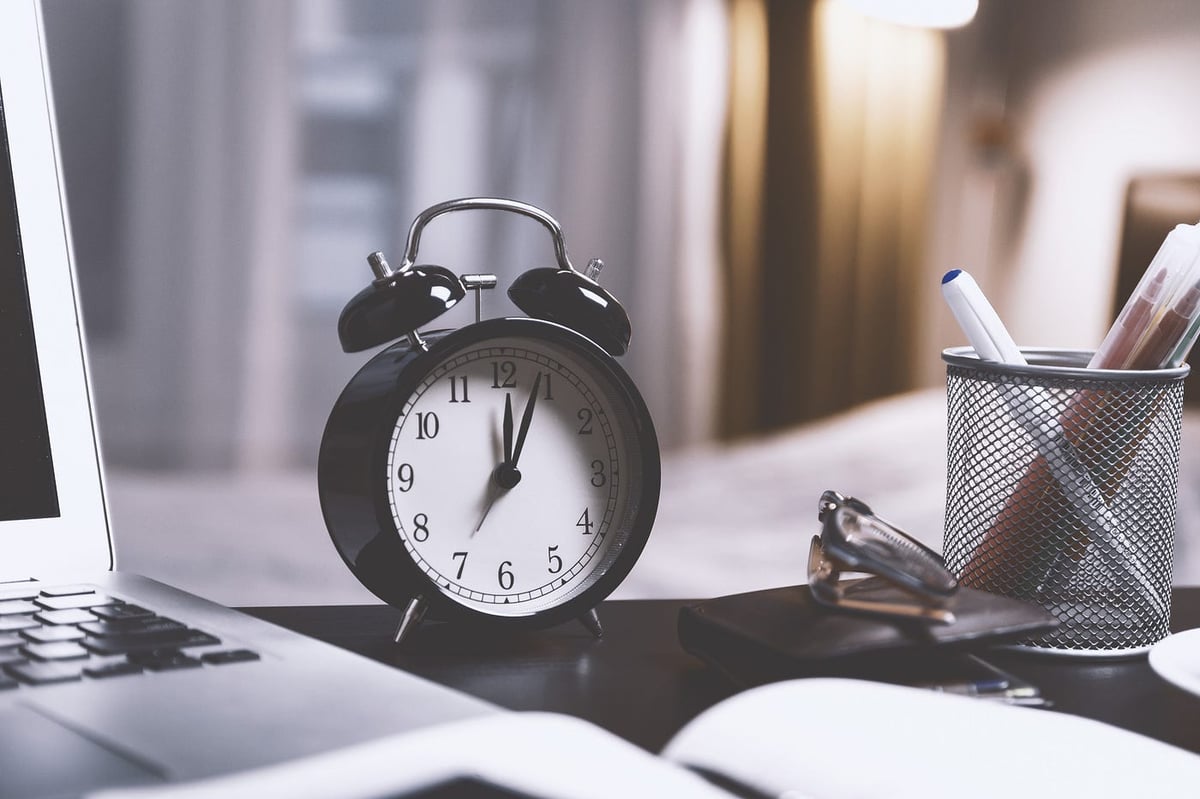I remember what it was like when I did my very first user interview. I was nervous. I had so many questions in my head...Have I remembered everything? What if I run over time? Will the interviewee be bored? What if I miss some questions? What if they don’t turn up? Have I got all my tech bits in place? Have I got enough battery left on my laptop?
There are so many things to consider and it makes it easy to forget when you're in the middle of leading your session. With the right tools and strategy, however you won’t need to worry because you’ll have a robust fallback plan that you can lean on. You can create plans as part of your UX Strategy that will ensure that you are always armed and prepared if anything goes wrong. Once you have this, you'll feel less stressed and you'll be able to conduct an even better interview that gets you real results.
The key thing is actually to relax. Why? Because if you're relaxed, your interviewee will feel relaxed too. If you're all stressed and rigid, they will feel it too. So remember, you're the expert. You know what you're doing and you are there to learn. So go in with an open heart, an open mind and everything will fall into place.
So once you’ve got your research plan, you’re ready to start your interview, remember that you’ve done everything you already can so you can let go. Now it’s time to focus on the interview itself. If you focus on feeling nervous that you don’t feel prepared enough, you’ll miss the most important part - the interview itself.
Here’s a few points on how to get the most on your interviews…
A big part of gathering real, honest and useful insights to your qualitative data is to create and foster an environment where your participants feel comfortable enough to speak honestly about their experiences in the first place.
If you’re new to conducting user research, it can be intimidating when it comes to leading your first user interview. Don’t despair! You’ve got this. Just remember that your participant is probably just as excited and curious about what’s going to happen, as you are about finding out the results! Especially if it’s their first time visiting a research lab or a digital studio. Remember they are another human being, just like you — so no need to fear.
Treat your research space as if it were your home. Ensure it’s well kept, presentable, cosy, and well lit. Imagine you’re inviting someone into your home, you’d probably ask if they’d like a cup of tea, ask them to take a seat on a comfortable coach with a pillow and ask them how their day was. You can do exactly the same in this scenario. Make your introduction feel familiar to your participants so that they don’t feel like they’re about to be interrogated in a test.

When someone feels relaxed, they are more likely to spend the time providing detailed, thoughtful answers. If they feel uncomfortable, they are more likely to rush their answers and be thinking about the next thing they have to do later that afternoon. A happy and comfortable participant means more in-depth, interesting answers and better quality results!
Sometimes people say what they think they want you to hear, instead of what they actually want to say. Look for clues around this. If they hesitate or pause for a moment, it’s good to take note of this. What were they doing when they paused? Give them a little time, and simply observe at first, then probe a little and ask them to talk you through what they’re thinking. This is your moment to ask, why they reached that conclusion. Participants may not necessarily tell you the answers you need to know straight away. They need you to ask questions in the right places, to help them reveal their thought process. Of course, always be sure not to lead your participant as this could skew your results.
Other clues may present themselves in different forms. For example, their body language. This can tell you a lot about how the participant is feeling. If they look tense, remind them that this is not a test and that there is no right or wrong answer, to ensure they’re feeling comfortable again.
Imagine you’re a detective. The mystery won’t solve itself and it’s up to you to spot the clues and then lace them together to get closer to a potential conclusion.

When you are well prepared, your time is much easier to manage. Ensure you have your interview guide ready to go.
With so many considerations to take into account during a user interview, it can be easy to spend too much time on a specific task.
Instead, get specific on how much time you’d like to spend on each task. Go back to your original interview goals and identify which of these goals are a priority. Ensure you cover your top 3 priorities throughout the interview, then allow enough space in your schedule for interesting tangents in conversation.
These tangents may be moments in conversations that pop up unexpectedly. These are usually where you’ll discover your most interesting findings, which could be your key to unveiling a new business opportunity, so allow time for them to appear naturally.

So in conclusion, 3 ways you could improve your user interviews are:
Remember your participants are your guests, watch out for those hidden clues, prioritise your top goals and let the conversation flow naturally. I hope these tips will help you find a little more ease to lead better, more insightful and meaningful user interviews.
Find out if MentorCruise is a good fit for you – fast, free, and no pressure.
Tell us about your goals
See how mentorship compares to other options
Preview your first month
